Introduction
In the realm of culinary delights, few dishes can match the elegance and indulgence of sauce-glazed duck tongues. This exquisite appetizer, often found in the repertoires of high-end Chinese restaurants, combines the rich, succulent flavor of duck tongues with a complex, savory sauce that dances on the palate. While it may seem like a dish reserved for the culinary elite, with the right techniques and ingredients, anyone can master the art of making sauce-glazed duck tongues at home. This guide will take you through every step of the process, from sourcing and preparing the duck tongues to crafting the perfect sauce and achieving that glossy, caramelized finish.
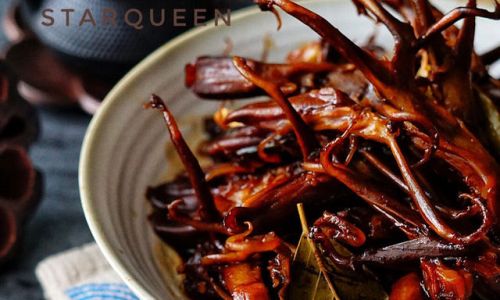
Section 1: Sourcing and Preparing the Duck Tongues
The first step in creating sauce-glazed duck tongues is sourcing high-quality ingredients. Duck tongues can be found at specialty butcher shops, Asian markets, or online retailers that specialize in gourmet foods. Look for tongues that are firm, have a clean appearance, and do not have an unpleasant odor. Freshness is key, as it will greatly impact the final taste and texture of your dish.
Once you have your duck tongues, it’s time to prepare them. Begin by rinsing the tongues under cold running water to remove any surface impurities. Then, place them in a bowl of cold water and soak for about 30 minutes to draw out any remaining blood or impurities. After soaking, drain the tongues and pat them dry with paper towels.
Next, trim any excess fat or sinew from the tongues using a sharp knife. This step is crucial for ensuring that the final dish has a clean, refined appearance and texture. Once trimmed, set the tongues aside while you prepare the blanching water.
Blanching the duck tongues helps to tighten their texture and remove any lingering impurities. Fill a large pot with water and bring it to a rolling boil. Add a generous pinch of salt and a few slices of fresh ginger to the water. This will help to flavor the tongues and neutralize any unwanted odors. Carefully drop the duck tongues into the boiling water and blanch for about 2-3 minutes. Use a slotted spoon to remove them from the water and immediately plunge them into an ice water bath to stop the cooking process. This rapid cooling will further firm up the texture of the tongues.
Once cooled, drain the tongues well and pat them dry once again. At this point, you can either proceed with the cooking process immediately or refrigerate the tongues for later use.
Section 2: Crafting the Perfect Sauce
The sauce is what truly elevates sauce-glazed duck tongues from an ordinary dish to a culinary masterpiece. The key to a successful sauce lies in balancing sweetness, saltiness, acidity, and umami. Here’s a recipe for a classic sauce that complements the duck tongues beautifully:
Ingredients:

- 1/4 cup hoisin sauce
- 1/4 cup honey
- 2 tablespoons soy sauce
- 1 tablespoon Chinese rice vinegar
- 1 tablespoon Shaoxing wine (or dry sherry)
- 1 teaspoon sesame oil
- 1 clove garlic, finely minced
- 1/2-inch piece of fresh ginger, finely minced
- 1 small red chili, finely chopped (optional for heat)
- 1/4 cup water or chicken broth
- 1 tablespoon cornstarch mixed with 1 tablespoon water (for thickening)
Instructions:
-
In a small saucepan, combine the hoisin sauce, honey, soy sauce, rice vinegar, Shaoxing wine, sesame oil, minced garlic, minced ginger, and chopped chili (if using). Stir well to combine.
-
Place the saucepan over medium heat and bring the mixture to a gentle simmer. Cook for about 5 minutes, stirring occasionally, to allow the flavors to meld together.
-
Add the water or chicken broth to the sauce and continue to simmer for another 2-3 minutes. This will help to thin the sauce slightly, making it easier to coat the duck tongues evenly.
-
To thicken the sauce, slowly stir in the cornstarch slurry. Continue to cook, stirring constantly, until the sauce reaches your desired consistency. Be careful not to overcook, as the sauce can become gluey if it’s cooked too long.
-
Taste the sauce and adjust the seasoning as needed. You may want to add a pinch of salt or a bit more honey to balance the flavors.
-
Remove the sauce from the heat and set it aside while you prepare the duck tongues for glazing.
Section 3: Cooking the Duck Tongues
Now that your sauce is ready, it’s time to cook the duck tongues. Preheat your oven to 375°F (190°C). Line a baking sheet with parchment paper or aluminum foil for easy cleanup.
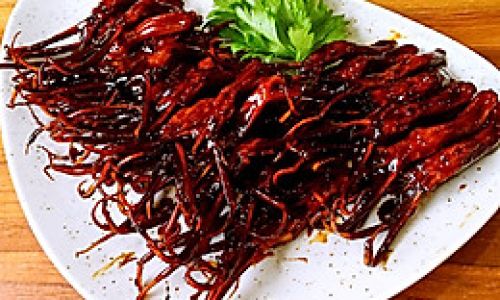
Arrange the prepared duck tongues in a single layer on the baking sheet. Brush each tongue generously with the prepared sauce, making sure to coat all sides evenly. This will help the sauce to caramelize and form a glossy finish on the tongues.
Place the baking sheet in the preheated oven and bake for about 15-20 minutes, or until the duck tongues are deeply glazed and cooked through. The internal temperature should reach 165°F (75°C) for food safety. Keep a close eye on the tongues during baking, as the sauce can burn quickly if left unattended.
Once done, remove the baking sheet from the oven and let the duck tongues cool slightly. You can serve them immediately while they’re still warm and glossy, or you can let them cool to room temperature for a more firm texture.
Section 4: Serving and Enjoying
Sauce-glazed duck tongues are a stunning appetizer that can be served at any fancy gathering or dinner party. To plate, arrange the tongues in a single layer on a serving platter. Drizzle any remaining sauce over the top for added flavor and visual appeal. Garnish with chopped green onions, sesame seeds, or thin slices of fresh chili for a pop of color and extra flavor.
Pair your sauce-glazed duck tongues with a selection of fine wines or cocktails to enhance the dining experience. A crisp white wine, such as Sauvignon Blanc or Pinot Grigio, can complement the savory flavors of the sauce, while a dry red wine or a sparkling rose can also make a delightful pairing.
In conclusion, making sauce-glazed duck tongues at home may seem like a daunting task, but with the right ingredients, techniques, and patience, you can achieve a dish that rivals the best restaurants. This culinary journey not only satisfies your taste buds but also offers a sense of accomplishment and pride in your culinary skills. So, gather your ingredients, roll up your sleeves, and embark on the delicious adventure of crafting your own sauce-glazed duck tongues today.


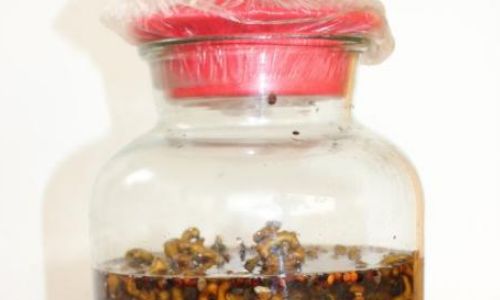
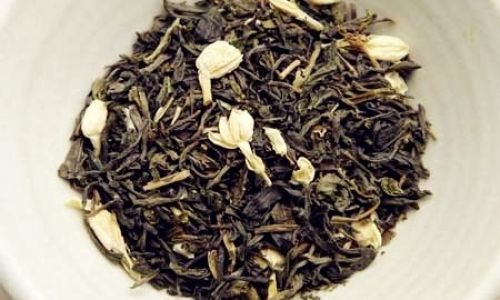
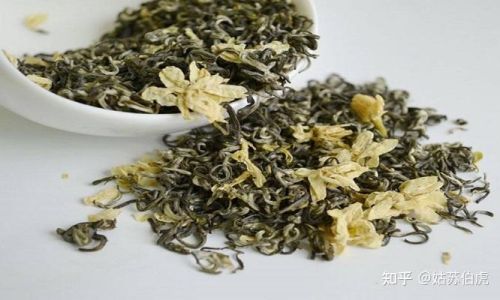

0 comments